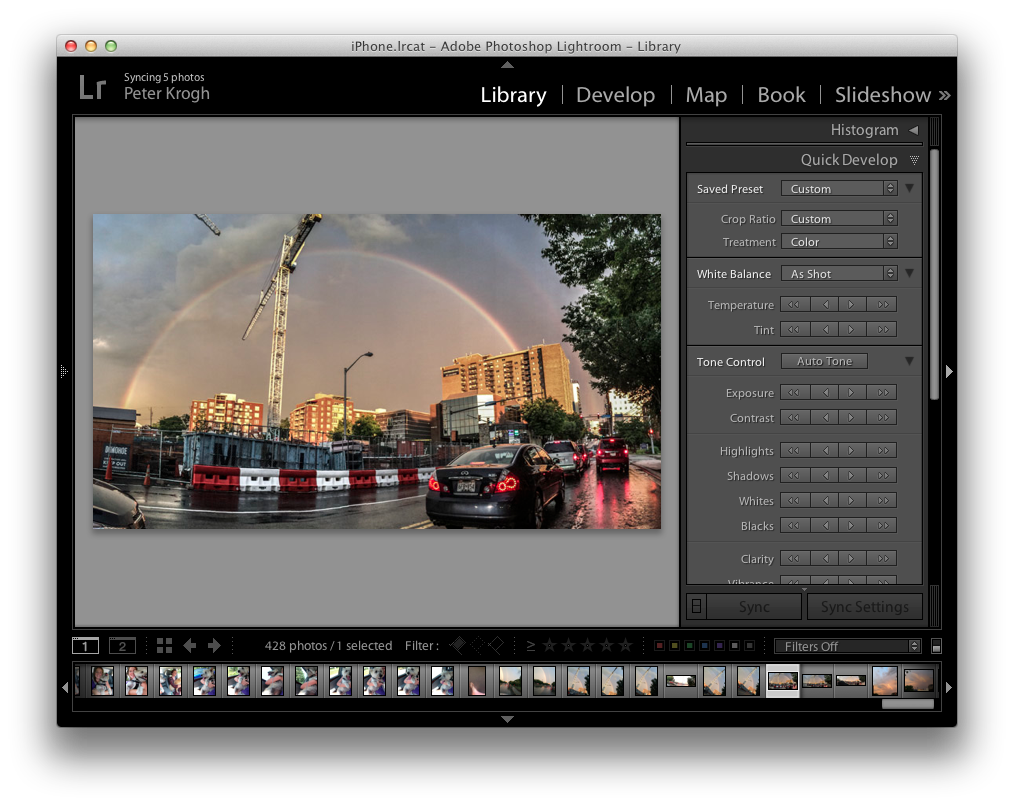Buried in the recent Adobe Creative Cloud rollout was a revolutionary change to the way Lightroom licensing functions. When the license expires, the program keeps on working.* This is a radical development. If you’ve been paying attention to the sturm und drang around the Creative Cloud licensing model (here, here, here, here) , this is a mind-blower.
First, the * part. Not all functions of Lightroom keep working. The sliders in the Develop module become inactive. Develop will still render the photo, but it won’t let you run the sliders. (You could still use Quick Develop in Library to make further adjustments if you like.)
Quick Develop will still run in an expired version of Lightroom 5.5
And the Map Module will stop working. The map technology is licensed through the Google Maps API, so Adobe has to pay for each Lightroom copy that uses it. If Adobe is not getting paid, they don’t want to pay Google, so the Map Module will be disabled for non-revenue users.
But other than Develop and Map, everything else works. You can make new catalogs, add new photos, add keywords, make collections, books, web galleries. prints, slideshows, exports, published copies… Basically, you have Lightroom LE. For free, if you want it.
Yes, free.
You can download the trial version of Lightroom and, at the end of the trial period, it mostly continues to function. Free.
Hopefully, this will quiet most of the fears that people have about Adobe’s motives in moving to the Creative Cloud licensing model. In the last few years, they have dramatically reduced the price of their photo software. Buying Photoshop Extended and Lightroom four years ago would set you back $1300. You can buy a decade of CC software and services for that price. And now Lightroom LE is free for those who are even cheaper.
Read more about getting the most out of Lightroom
This is a bold play by Adobe. Here’s how I interpret it. Basically, they are betting that photographers will see enough value in the subscription services that they will continue to pay for Lightroom, Photoshop, Lightroom Mobile and Lightroom Web ($10/month). Even when they can get most of Lightroom for free.
Stephen Colbert would say that a move like this takes big balls. You only do this if you are all-in on providing ongoing value to your customers. It’s the opposite of lock-in. And it illustrates the core values of the company. Your stuff belongs to you, and it’s up to Adobe to provide compelling value in order to deserve your software dollars.
There’s no guarantee that Adobe will get this right. Even though their software powers much of the creative services industry, they have not been able to hit a home run in web services. But they understand that the future of media is squarely pegged to APIworld, and the only way to survive is to go all-in.
I’m really stoked about this decision (and I’m almost never “stoked” about anything, even those things that I’m quite enthusiastic about.) It’s gutsy, forward-thinking, bet-the-farm confidence on making some kick-ass software and services.
To those folks at Adobe who had the vision to move this forward, hats off.


